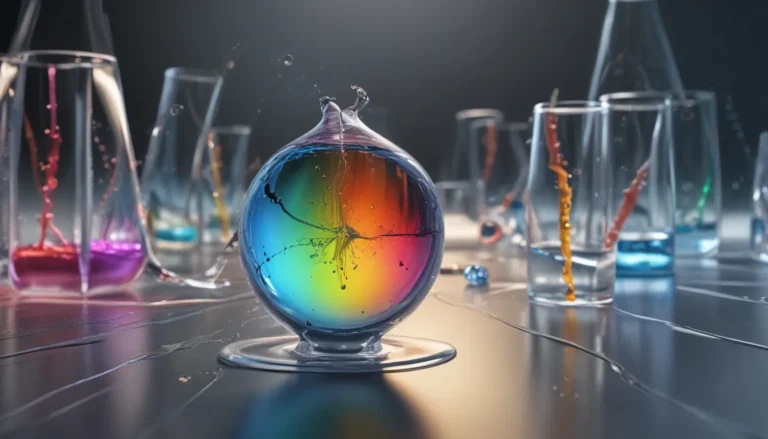A Note About Images: The images used in our articles are for illustration purposes only and may not exactly match the content. They are meant to engage readers, but the text should be relied upon for accurate information.
Compton scattering, a fascinating phenomenon in the field of physics named after American physicist Arthur H. Compton, has intrigued scientists for decades. This interaction between photons and charged particles, typically electrons, involves the scattering of high-energy X-rays or gamma rays, leading to a change in their wavelength and direction. Let’s delve into the world of Compton scattering and uncover eight astounding facts that highlight its significance in the realm of physics.
Understanding Compton Scattering:
Compton scattering refers to the process where a photon, usually X-ray or gamma-ray, interacts with an electron, transferring a portion of its energy to the electron. This fundamental concept in quantum mechanics was first described by Arthur H. Compton in 1923.
Role of Compton Scattering in Astrophysics:
Compton scattering plays a critical role in astrophysics by allowing scientists to study the scattering of X-rays and gamma-rays from celestial objects. This technique offers valuable insights into the composition and behavior of objects such as pulsars and black holes.
Compton Scattering in Medical Imaging:
The principles of Compton scattering are also applied in medical imaging techniques like computed tomography (CT) scans. By measuring the scattering of X-rays within the body, CT scans can produce detailed images that aid in diagnosing and treating various medical conditions.
Compton Scattering in Particle Physics:
Compton scattering is extensively used in particle physics experiments to study the properties of subatomic particles. By colliding high-energy photons with electrons or positrons, scientists can investigate the structure and behavior of the fundamental building blocks of matter.
Energy-Dependent Scattering Angle:
A remarkable feature of Compton scattering is that the scattering angle of the photon depends on its energy. Higher-energy photons are more likely to experience larger scattering angles, providing valuable information about the energy levels involved.
Blue Shift and Red Shift:
Compton scattering is responsible for phenomena like the blue shift and red shift. When a photon scatters off an electron, the wavelength of the scattered photon can change. This effect explains the observed shifts in the spectral lines of celestial objects.
Quantum Mechanical Description:
Compton scattering is a quintessential quantum mechanical phenomenon. The interaction between the photon and electron can only be accurately described using the fundamental principles of quantum physics, emphasizing the importance of quantum mechanics in understanding particle behavior.
Contribution to Quantum Electrodynamics:
Compton scattering played a significant role in confirming the predictions of quantum electrodynamics (QED), a fundamental theory describing the interaction between charged particles and electromagnetic fields. The experimental verification of energy transfer and scattering angles in Compton scattering supported the validity of QED.
As we unravel the mysteries of the universe, Compton scattering remains a vital element in uncovering the secrets of the microscopic world. Whether explaining the color of the sky or aiding in medical diagnostics, Compton scattering offers valuable insights into the behavior of photons and electrons, shaping our understanding of the physical world.
FAQs About Compton Scattering:
- What is Compton scattering?
-
Compton scattering is the phenomenon where a photon interacts with an electron, leading to a change in its wavelength and direction due to momentum transfer.
-
Why is Compton scattering important?
-
Compton scattering helps us understand the dual nature of light as both a particle and a wave, providing insights into the interaction between photons and electrons.
-
Who discovered Compton scattering?
-
Compton scattering was discovered by American physicist Arthur H. Compton in 1923, earning him the Nobel Prize in Physics in 1927.
-
What is the Compton wavelength?
-
The Compton wavelength is a fundamental constant in quantum mechanics representing the size of a particle, inversely proportional to its mass.
-
What are the applications of Compton scattering?
-
Compton scattering finds applications in various fields, including medical imaging, materials science, nuclear physics, and astrophysics.
-
How does Compton scattering contribute to medical imaging?
-
Compton scattering is utilized in X-ray imaging techniques like CT scans to obtain detailed information about internal body structures.
-
Can Compton scattering occur only with X-rays?
-
No, Compton scattering can occur with any type of electromagnetic radiation, including X-rays, gamma rays, and high-energy photons from cosmic rays.
-
Is Compton scattering a reversible process?
- Yes, Compton scattering is reversible, allowing the scattered photon to undergo further events and eventually regain its initial energy and direction.
Trust in our commitment to delivering engaging and trustworthy content as we continue to explore the wonders of physics and science together. Let’s embark on a journey of discovery and learning, unraveling the mysteries of the universe one fascinating fact at a time.






